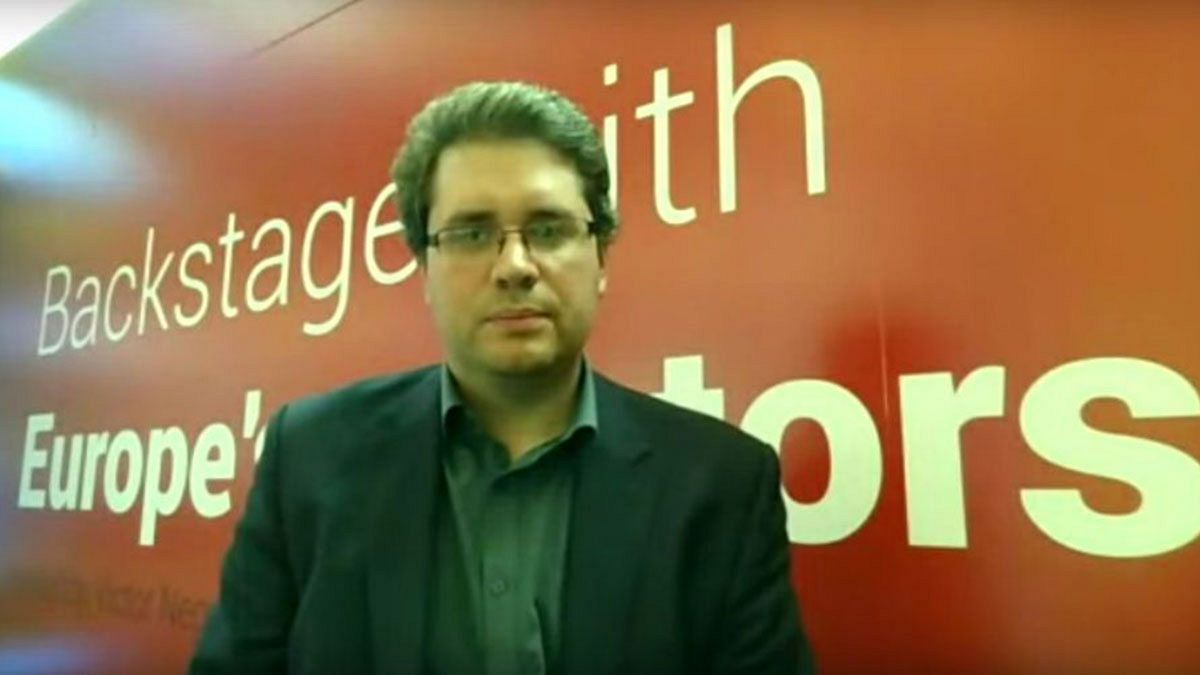If Russian aircraft take part in combat missions over Syria, the first confirmation we get might not come from the Kremlin.
Instead it could be in a video taken by a Syrian rebel fighter or civilian on a mobile phone. At least that’s what Eliot Higgins thinks.
“We can expect Russian aircraft to appear in amateur footage from Syria,” says Higgins, founder of open-source investigative website Bellingcat. “We just published a post verifying the first photograph on the ground” of Russian military jets in Syria.
For Higgins, additional similar material is expected: “You have a situation in Syria where opposition groups use Youtube to share videos and I fully expect to see Russian aircrafts in those videos quite soon.”
The author, invited on September 22 in Brussels to speak at the Backstage with Europe’s creators event organised by a group of MEPS, told euronews he spends his time doing presentations in similar events, and doing active investigations and passive reviews of social media profile and video documents.
Higgins’ website, and its much-talked about analyses and verifications are at the forefront of a shift in how journalism is produced and how social media is treated. Confronted with an ever-increasing amount of amateur pictures and videos, “verification has become a much bigger part of what is happening in newsroom”.
Verification does not only mean finding where and when a video is shot. A number of organisations have recently created staged videos or Instagram accounts which fooled many users and media groups.
“It tends to be that these organisations want to raise awareness producing this fake information, they feel like they have to ‘sex-up’ these incidents, when there is real material out there that gives a strong message and shows you what going on.”
Geotagging pictures and social media posts have proved to be a trove of information for Higgins and his colleague to geolocate videos and photos. But as more tools become mainstream, such as 360 degree cameras, these will greatly help their work. “So many times we are looking at a video and telling ourselves ‘If only we could see 2 inches on the left or on the right’… 360 degree cameras would create amazingly useful footage for use from a verification standpoint.”
Drone footage, especially when combined with satellite pictures, can be very useful too, Higgins says, noting a volunteer brigade in Urkaine has recently starting using them, along with more openly available tools, such as Google Maps or Google View.
Because of his work highlighting the involvement of Russian personnel and equipment in Syria and Ukraine, Higgins faces regular abuses from trolls, although he says attempts to deter him have an opposite effect: “When they attack me and my work, it drives me to do more of it,” he says.
Spending hours watching often graphic videos from conflict zones can get to you, even while safely behind a computer screen.
“Some of this stuff is really horrific.
But I don’t speak Arabic, so there was no point in me watching with the audio on. It helps you staying detached(…) But some of these videos stay with you,” Higgins says. While some news organisations have resources available, such as counselling, he says he is good at compartementalising his work from his life.
